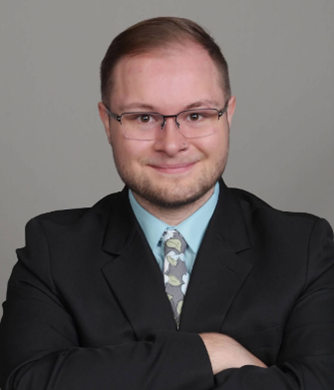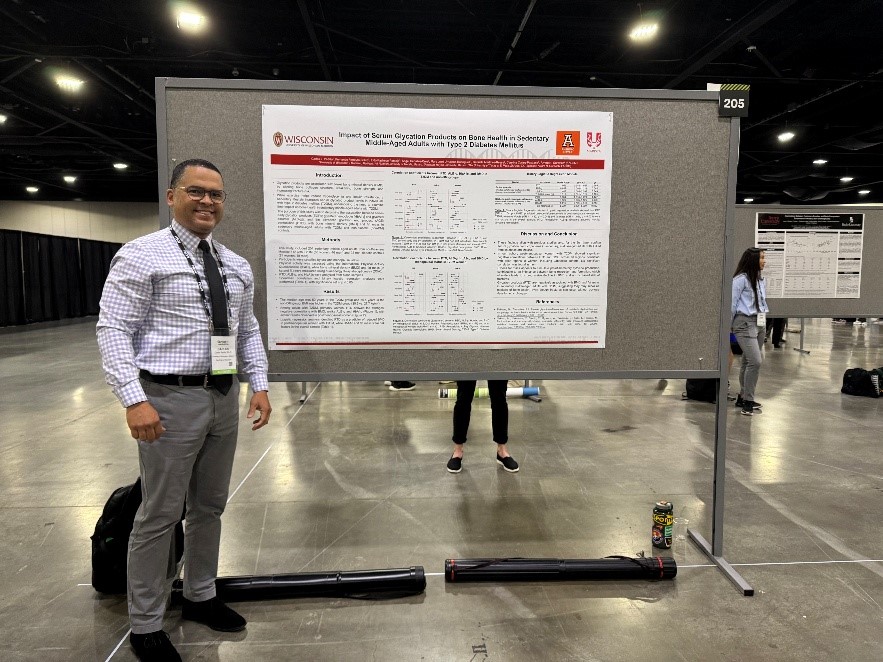- Research Areas and Techniques
- Research Staff
- Publications
- National and International Scientific Meetings
- Events
-
Neuromuscular Aging
- Investigating how aging affects the interplay between the nervous system and skeletal muscle.
-
Sarcopenia & Motor Neuron Health
- Examining both muscular and neuronal contributions to muscle weakness and functional loss.
-
Diet-Based Interventions
- Studying ketogenic diets, ketone esters, high-fat nutrition, and polyphenols to preserve motor unit integrity and muscle quality.
-
Electrophysiology, Muscle Physiology, and Morphology
- Applying in vivo electrophysiology techniques, including electromyography (EMG), compound muscle action potential (CMAP), motor unit number estimation (MUNE), H-reflex, M-wave, motor evoked potentials (MEPs), repetitive nerve stimulation (RNS-CMAP), and single-fiber electromyography (SFEMG). Assessing muscle physiology through measurements of muscle contractility torque (twitch, tetanic torque, force-frequency relationship, and fatigue). Evaluating muscle morphology and health using in vivo and ex vivo electrical impedance myography (phase angle, reactance and resistance).
-
Muscle and Motor Function
- Assessing muscle strength and motor performance using grip strength testing and rotarod evaluations.
-
Exercise
- Implementing resistance training (e.g., weight-pulling, mesh grip), neuromuscular electrical stimulation, and endurance training (e.g., treadmill running).
-
Disuse & Recovery
- Investigating muscle and nerve recovery following immobilization- or nerve crush-induced atrophy in aging mouse models.
Ongoing Projects
- Preservation of Motor Units and Physical Function in Aging: The Role of Ketogenic Intervention.
- Effects of Exercise Intervention on Metabolic Health and Neuromuscular Performance.
- Polyphenol Supplementation as a Neuroprotective Strategy to Preserve Motor Neuron Integrity and Mitigate Sarcopenia During Aging.
Join the Lab
If you’re passionate about neuromuscular physiology, nutritional interventions, and translational aging research, this may be an excellent opportunity for you.

Carlos J. Padilla Colón, PhD
Principal Investigator
I am an Assistant Professor in the Department of Kinesiology at the University of Wisconsin–Madison and a Faculty Affiliate with the Institute on Aging (IOA) in the School of Medicine and Public Health. I am dedicated to advancing the field of neuromuscular aging by investigating the physiological and metabolic mechanisms that contribute to the decline in physical function. My research integrates muscle physiology, electrophysiology, and nutritional interventions to develop strategies that promote neuromuscular health in aging populations. I hold two doctoral (PhD) degrees in Kinesiology: one in Physical Activity and Sports Science from the University of León in Spain (2014), and another in Obesity Sciences and Adapted Physical Activity from The Ohio State University (2025), where I focused on sarcopenia, obesity, and aging. My postdoctoral training at The Ohio State University and Ohio University provided advanced expertise in electrophysiology and muscle physiology through work in the Departments of Neurology and Biomedical Sciences. In May 2023, I completed specialized graduate studies in Obesity Sciences at The Ohio State University to deepen my understanding of metabolism and obesity. I joined the Department of Kinesiology at UW–Madison in 2023 as a Research Associate and was appointed Assistant Professor in August 2024. Outside of research, I enjoy strength training and practicing baseball with my sons.
 Patrick O’Connor, BS Student
Patrick O’Connor, BS Student
Lab Assistant
My name is Patrick O’Connor, and I recently started as a lab assistant in Padilla’s Lab (Medical Science Center) within the Department of Kinesiology. I have a strong interest in sarcopenia research, particularly from the perspective of a coach who wants to help clients prevent muscle loss as they age. I’m also curious about whether GLP-1 agonist medications may worsen sarcopenia in older adults. I’m currently a senior at the University of Wisconsin–Madison, majoring in Kinesiology. I’m originally from Houston, Texas, but I’ve been living in Madison for the past four years. I’m interested in pursuing a career in physical therapy and hope to be involved in research as a physical therapist. For the past three years, I’ve worked as a group fitness coach and have also shadowed a physical therapist at the VA. Outside of the lab, I enjoy being outdoors and playing basketball.

Brenton Lee Halvorson, MS Student
Lab Assistant
Brenton Halvorson obtained a bachelor’s degree in biomedical engineering from UW-Madison, specializing in Cell/Tissue Engineering and Biomaterials. He has a background in stem cell engineering, cell culture instrumentation development, and microbiological applications for clinical treatment of bacterial vaginosis. Currently, he is completing a master’s in biomedical engineering also from UW-Madison with expanding focus on orthopedic biomechanics, particularly as it relates to improving clinical treatment options for various patient populations. His research interests include understanding physiological impacts of aging on biomechanical function of muscle/bone tissue, especially regarding composition of gut microbiome (gut-joint axis) and influence of diet. It is regarding diet effects on orthopedics he has begun working in Dr. Padilla’s lab, using rodent models to study how diet will impact on neuromuscular function. His work focuses on using electrophysiological techniques and muscle physiology to understand how diet interventions may improve function in aging systems. Outside of his academic work, Brenton enjoys thrift shopping, video games, crafting, and spending time with his cat.

Eduardo Miguel Alvarez, MBA, MA
Volunteer Researcher
Miguel Álvarez is committed to promoting human well-being through education, research, and holistic practices. He holds a degree in Sustainable Tourism Management from Instituto Tecnológico de Costa Rica, a postgraduate degree in Theology from Carey Theological College in Canada, and an MBA with a focus on people management from Formato Educativo Business School in Spain. For ten years, he worked at a wellness retreat center, where he coordinated programs centered on yoga, nutritious food, and massage therapy experiences designed to support physical, mental, and emotional balance. Throughout his academic and professional journey, Miguel has remained interested in the relationship between body, mind, and environment. During his undergraduate studies, he participated in field research on amphibians, which sparked his appreciation for scientific inquiry and the role of ecosystems in supporting life. His theological work has explored themes such as purpose, healing, and the ethical foundations of caring for both people and the planet. He is currently collaborating in Dr. Carlos Padilla’s laboratory at the University of Wisconsin–Madison, in the Department of Kinesiology. The lab focuses on neuromuscular physiology, muscle function, and the aging process. Miguel actively supports data collection and contributes to ongoing research initiatives. He is particularly interested in the potential health applications of plant-based compounds, especially those derived from tropical species traditionally used to address muscular and skeletal conditions. In his free time, he enjoys birdwatching, hiking, and reading. He lives in Madison, Wisconsin, with his partner and their six-year-old son.
Padilla, C. J., Harris, H., Volek, J. S., Clark, B. C., & Arnold, W. D. (2024). Effects of a ketogenic diet on motor function and motor unit number estimation in aged C57BL/6 mice. The journal of nutrition, health & aging, 28(6), 100219. Advance online publication. https://doi.org/10.1016/j.jnha.2024.100219
Padilla, C. J., Ferreyro, F. A., & Arnold, W. D. (2021). Anthropometry as a readily accessible health assessment of older adults. Experimental Gerontology, 153, 111464. https://doi.org/10.1016/j.exger.2021.111464
Clark, B. C., Rutkove, S., Lupton, E. C., Padilla, C. J., & Arnold, W. D. (2021). Potential utility of electrical impedance myography in evaluating age-related skeletal muscle function deficits. Frontiers in physiology, 12, 666964. https://doi.org/10.3389/fphys.2021.666964
Padilla, C. J., Harrigan, M. E., Harris, H., Schwab, J. M., Rutkove, S. B., Rich, M. M., Clark, B. C., & Arnold, W. D. (2021). Profiling age-related muscle weakness and wasting: Neuromuscular junction transmission as a driver of age-related physical decline. GeroScience, 43(3), 1265–1281. https://doi.org/10.1007/s11357-021-00369-3
Padilla, C. J., & Toledo, G. J. Relationship between obesity, sarcopenia, sarcopenic obesity, and dynapenia in the elderly, Translational Journal of the ACSM: Spring 2021 – Volume 6 – Issue 2 – e000152.doi:10.1249/TJX.0000000000000152. https://journals.lww.com/acsmtj/Fulltext/2021/04150/Relationship_between_Obesity,_Sarcopenia,.2.aspx
Arnold, W. D., & Padilla, C. J. (2020). Maintaining muscle function across the lifespan: The state of science. American journal of physical medicine & rehabilitation, 99(12), 1171–1176. https://doi.org/10.1097/PHM.0000000000001429
Padilla, C. J., Graniela, S. (2018). The effect of 8 weeks of strength training and creatine intake on sarcopenia. J Orthop Physiother 1(2): 201. http://www.annexpublishers.com/articles/JOP/2102-The-Effect-of-8-Weeks-of-Strength-Training-and-Creatine-Intake-on-Sarcopenia.pdf
Padilla, C. J., Molina-Vicenty, I. L., Frontera-Rodríguez, M., García-Ferré, A., Rivera, B. P., Cintrón-Vélez, G., & Frontera-Rodríguez, S. (2018). Muscle and bone mass loss in the elderly Population: Advances in diagnosis and treatment. Journal of Biomedicine (Sydney, NSW), 3, 40–49. https://doi.org/10.7150/jbm.23390
Padilla Colón CJ, Ferrer HL, Cintron-Velez G, Molina-Vicenty I (2018) Advances in the Treatment of Muscle Mass Loss and Sarcopenia. J Muscle Health 2(1): 1010. https://doi.org/10.47739/2578-3823/1010
Padilla, C. J., Sánchez Collado, P., & Cuevas, M. J. (2014). Benefits of strength training for the prevention and treatment of sarcopenia. Nutrición hospitalaria, 29(5), 979–988. https://doi.org/10.3305/nh.2014.29.5.7313
Motor function and muscle mass are significantly reduced in the hindlimbs after short-term immobilization. ACSM’s 2024 Annual Meeting, May 28 – May 31, 2024, Boston, Massachusetts. Author Block: Carlos J. Padilla, Hallie Harris, W. David Arnold, and Alvaro N. Gurovich (FACSM). DOI: 10.1249/01.mss.0001056236.46561.e9
Ketogenic diet improves motor function and motor unit connectivity in aged C57BL/6 mice. Podium Presentation. 3rd Annual University of Wisconsin – Madison (December 1, 2023). Skeletal Muscle Network Symposium, Wisconsin Madison. Author: Carlos J. Padilla.
Obesity, Motor Function, and Anthropometric Measures in F344 Rat Model During Aging. ACSM’s 2023 Annual Meeting, World Congress on Exercise is Medicine® and World Congress on the Basic Science of Physical Activity and Aging Biology, May 30 – June 2, 2023, Denver, Colorado. Author Block: Carlos J. Padilla, William Carvajal, and Alvaro Gurovich. DOI: 10.1249/01.mss.0000989536.95508.bc
Ketogenic diet intervention on muscle strength and motor performance in aged C57BL/6 mice. ACSM’s 2022 Annual Meeting, World Congress on Exercise is Medicine® and World Congress on the Basic Science of Exercise and Vascular Health, May 31 – June 4, 2022, San Diego, California. Author Block: Carlos J. Padilla, Hallie Harris, and W. David Arnold. DOI: 10.1249/01.mss.0000881192.90028.b6
High fat diet on motor unit and muscle function in a rat model of sarcopenia. American College of Sports Medicine Annual Meeting, World Congress on Exercise is Medicine® and World Congress on the Basic Science of Exercise in Regenerative Medicine being held June 1-5, 2021. Author Block: Carlos J. Padilla, William D. Arnold, Hallie Harris. DOI: 10.1249/01.mss.0000762500.36733.61
Estimation of skeletal muscle tissue in athletes using dual x ray absorptiometry, anthropometry, and bioelectrical impedance. American College of Sports Medicine Annual Meeting, World Congress on Exercise is Medicine® and World Congress on the Basic Science of Exercise in Regenerative Medicine being held June 1-5, 2021. Author Block: Fernando Antonio Ferreyro Bravo, Elda Pacheco-Pantoja, Carlos J. Padilla, Alvaro N. Gurovich, FACSM. DOI: 10.1249/01.mss.0000760592.75669.d5
Electrical impedance myography correlates with muscle mass and neuromuscular deficits during aging: A potential instrument for sarcopenia? Society on Sarcopenia, Cachexia & Wasting Disorders. Digital Conference, Dec 2020. Authors block: Carlos J. Padilla, Markus Harrigan, Hallie Harris, Seward B. Rutkove, Brian C. Clark, and W. David Arnold. Abstract-Book_SCWD_2020.pdf
Prediction on body density with the use of anthropometric equations in elite Puerto Rican Judokas. American College of Sports Medicine Annual Meeting, World Congress on Exercise is Medicine® and World Congress. Medicine & Science in Sports & Exercise: Volume 48:5 Supplement. Authors block: Rosado-Méndez O, Vicente J, Padilla CJ, and Bonilla V (2016). DOI: 10.1249/01.mss.0000487552.38461.3d
Strength training and creatine supplementation to prevent sarcopenia in older adults. American College of Sports Medicine Annual Meeting, World Congress on Exercise is Medicine® and World Congress. Medicine & Science in Sports & Exercise: Volume 46 – Issue 5S – p 122-125. Authors block: Padilla CJ (2014). 10.1249/01.mss.0000493542.68677.05
2025 American College of Sports Medicine (ACSM) Annual Meeting, Atlanta, Georgia
Dr. Carlos Padilla presented a study in collaboration with national and international universities, including the University of Texas at El Paso, Marist University of Mérida, and Anáhuac Mérida University. The title of the poster was: “Impact of Serum Glycation Products on Bone Health in Sedentary Middle-Aged Patients with Type 2 Diabetes Mellitus.”


